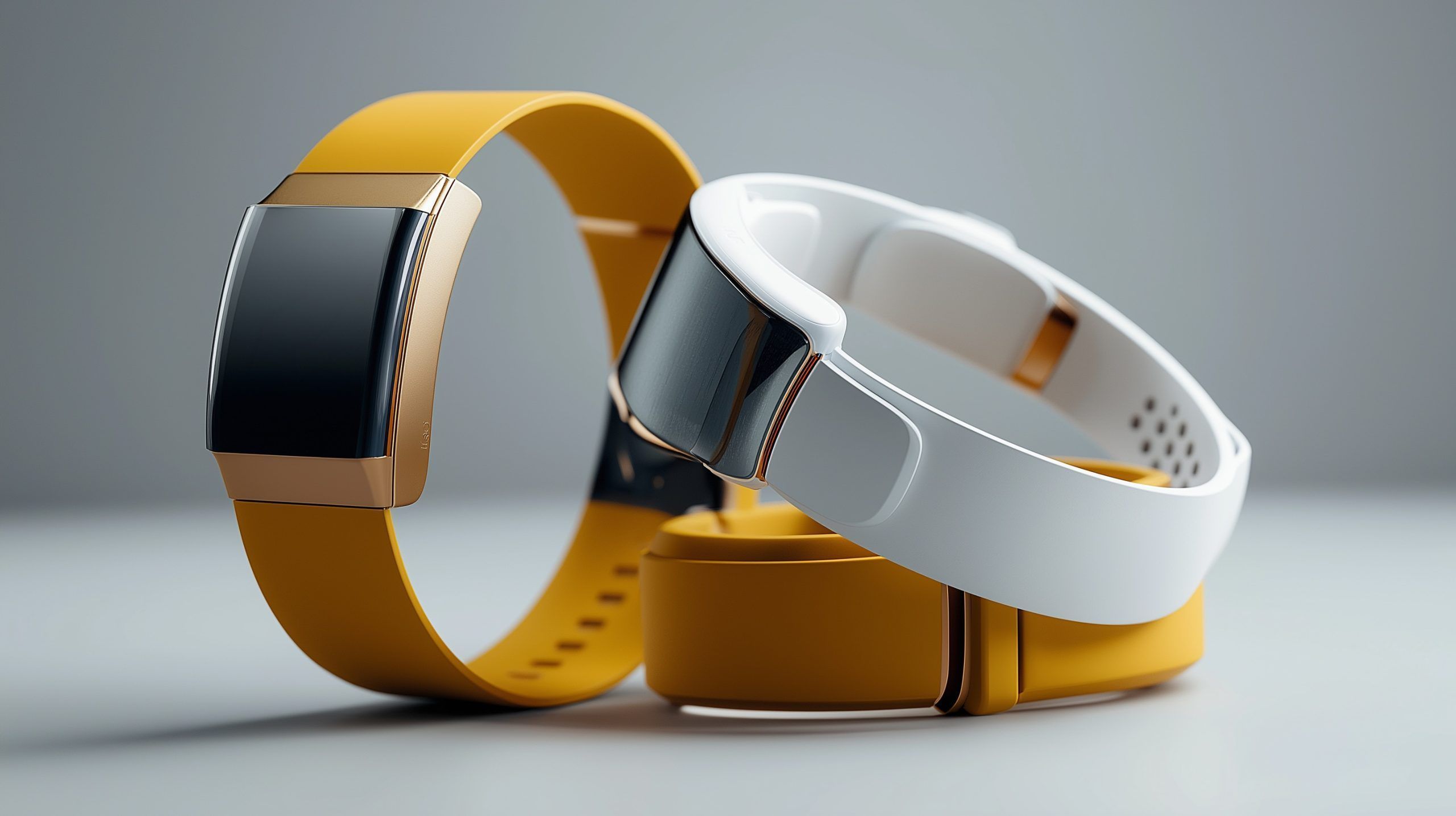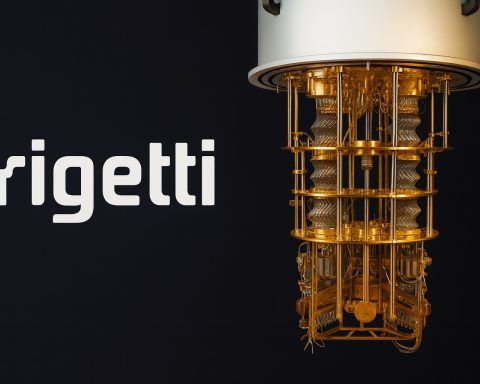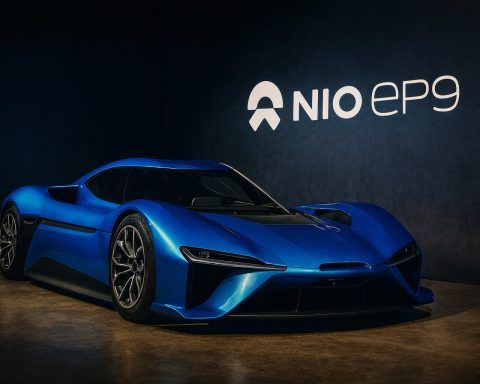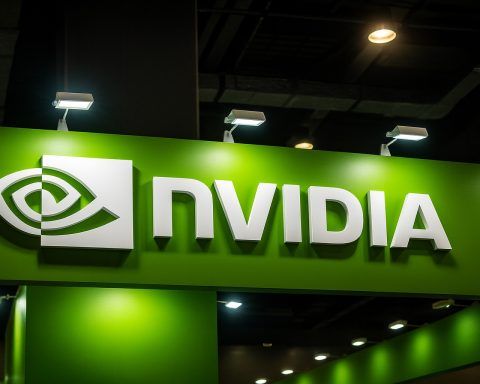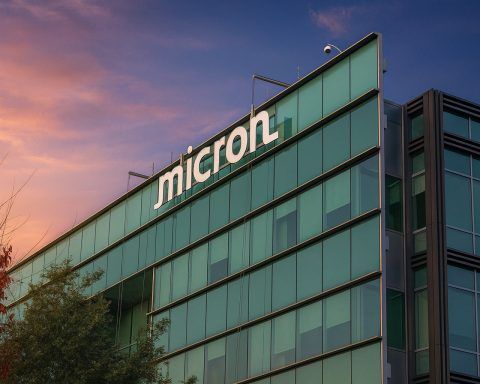- Global consumer tech sales are projected to reach $1.29 trillion in 2025, about 2% growth over 2024.
- Apple leads wearables with roughly a 20–25% global market share in recent quarters, driven by its Watch and AirPods lines.
- Wearable shipments grew 5.4% in 2024 to 534.6 million units and are expected to grow 4.1% in 2025 as key segments mature.
- IDC projects wearables unit shipments around 560 million in 2025, with hearables and smartwatches remaining the largest categories by volume.
- At CES 2025, Halliday unveiled smart glasses with an invisible DigiWindow heads-up display and built-in AI assistant, slated for release by Q1 2025.
- Ultrahuman showcased a $2,000 luxury smart ring that tracks sleep, activity, stress and even alerts wearers about caffeine intake.
- Withings demonstrated a concept smart health-monitoring mirror called Omnia that analyzes vital signs, body composition and lung function daily.
- The Matter standard is accelerating smart-home interoperability, and Samsung previewed Home AI to orchestrate appliances, lighting and security across brands.
- Ultra-fast charging has become common, with 100–200W GaN chargers enabling 0–100% in 10–15 minutes for smartphones and laptops.
- Samsung plans to introduce solid-state batteries in its Galaxy Smart Ring by Q4 2025, followed by wireless earbuds in 2026 and smartwatches in 2027.
Overview of the 2025 Consumer Electronics & Wearables Market
The consumer electronics and wearables market in 2025 is robust yet marked by cautious optimism [1]. Global consumer tech sales are projected to reach $1.29 trillion in 2025, about 2% growth over 2024 [2]. Major industry players – including Apple, Samsung, Google (with Fitbit), Huawei, Xiaomi, Sony, and others – continue to dominate various segments. Apple leads in wearables with roughly a 20–25% global market share in recent quarters [3], thanks to its popular Watch and AirPods line. Samsung and Huawei follow closely, and emerging brands (e.g. India’s Noise/Imagine Marketing) are expanding their global reach [4]. In smartphones, smart TVs, laptops, and smart home gadgets, these same tech giants compete alongside regional players, driving innovation and intense competition.
Overall consumer spending on tech is gradually improving, recovering from recent economic headwinds [5]. However, the market’s growth is uneven across categories. Wearable device shipments grew 5.4% in 2024 to 534.6 million units but are expected to slow to 4.1% growth in 2025 as key segments mature [6]. Categories like smartwatches and earbuds (hearables) are approaching saturation in major markets (the US, Europe, China), leading companies to seek growth in emerging markets and new product types [7] [8]. Consumer electronics firms are also navigating supply chain challenges and global trade dynamics, but replacement cycles for devices (like people upgrading older phones, TVs, etc.) are kicking in and should help sustain modest growth [9]. All in all, 2025’s tech industry is the largest it’s ever been, and companies are laser-focused on high-value innovations to entice consumers in this competitive landscape.
Latest Developments and News in 2025
2025 has already seen a flurry of tech developments and product launches, many unveiled at CES 2025, the year’s biggest electronics show. Artificial intelligence (AI) and next-gen wearables took center stage at CES, solidifying these trends as barometers of innovation [10]. For example, multiple companies debuted new smart glasses with built-in AI assistants, challenging Meta’s Ray-Ban Stories in the AR eyewear space [11]. One standout was the Halliday smart glasses featuring an “invisible” DigiWindow heads-up display – a tiny screen in the user’s field of vision that remains visible even in sunlight [12]. These glasses include an AI agent that can proactively answer questions and summarize meetings, and are slated for release by Q1 2025 [13].
Wearable AI-driven smartwatches were also on display. Pinwheel, for instance, showed a child-friendly smartwatch with a built-in chatbot (PinwheelGPT) to answer kids’ questions in a safe, age-appropriate way [14] [15]. Parents can monitor the child’s contacts and location via GPS, highlighting how AI and connectivity are being used to blend education, safety, and entertainment in new wearables [16] [17]. Health tech remains a headline theme as well – CES showcased everything from luxury smart rings tracking wellness to smart home health devices. Ultrahuman introduced a $2,000 luxury smart ring made of 18K gold/platinum that tracks sleep, activity, stress, and even alerts wearers if they consume too much caffeine [18] [19]. Withings demonstrated a concept smart health-monitoring mirror (called Omnia) that uses AI to analyze your vital signs, body composition, lung function and more each day – essentially a smart mirror acting as a 360° health dashboard [20] [21].
Chart: Worldwide wearables shipments forecast by product category (units, 2025–2029). Earwear (hearables) and smartwatches remain the largest segments, while emerging device types like smart glasses and rings grow from a small base [22].
In other 2025 news, sustainability and tech are intersecting in novel ways. At CES, for example, startup demos included a paper-thin, lithium-free cellulose battery – an eco-friendly innovation pointing to greener gadgetry ahead [23]. Smart home integration is getting a boost from industry-wide adoption of the Matter standard, enabling better interoperability between devices from different brands. Major manufacturers like Samsung previewed “Home AI” systems that orchestrate appliances, lighting, security and more via voice and AI, making connected living more seamless [24]. We’re also seeing new entrants in wearables: Samsung confirmed it will launch its first Galaxy Ring smart ring, aiming to compete with Oura by offering rich health tracking with no subscription fees [25]. (The global wearable tech market was about $120 billion in 2023 and is projected to reach ~$158 billion in a few years [26], so companies are eager to claim a slice of this growth.) Even Apple – traditionally focused on watches – is rumored to be exploring smart rings, as multiple patents suggest [27]. Meanwhile, the highly anticipated Apple Vision Pro (a mixed reality headset announced in 2023) is expected to influence the AR/VR space this year, with competitors and developers preparing content for this new platform [28]. All told, 2025’s headlines so far underscore a tech industry balancing breakthrough innovations (AI everywhere, AR/VR, health gadgets) with iterative improvements (better displays, faster chips) to entice consumers.
Evolution of Consumer Electronics and Wearables (Recent Years)
The current landscape builds on years of rapid evolution in consumer tech. Over the past decade, smartphones became ubiquitous, essentially peaking in innovation and sales by the late 2010s. This maturity set the stage for other device categories to rise. Wearable technology has steadily expanded since the mid-2010s: early fitness bands and first-gen smartwatches (like the 2015 Apple Watch) have transformed into today’s sophisticated health and wellness wearables. In the late 2010s and early 2020s, wearable adoption accelerated, aided by improving sensors and the societal shift toward health tracking. The COVID-19 pandemic (2020–21) was a catalyst – consumers bought gadgets for home office, entertainment, and fitness, boosting sales of laptops, webcams, smart workout gear, and health wearables (like pulse oximeters and smart thermometers). Many people also became more health-conscious, spurring interest in devices that monitor vitals and encourage exercise. By 2024, the wearables market had grown to over 500 million units annually [29], but growth slowed as core markets became saturated and many consumers continued using devices bought during the pandemic instead of upgrading [30]. Now in 2025, a replacement cycle is beginning – e.g. smartwatch shipments are expected to tick up ~0.9% this year after a dip, as users finally upgrade aging devices from a few years ago [31].
On the consumer electronics side, AI integration has been a defining thread of recent evolution. Starting with voice assistants (Amazon Alexa, Google Assistant, Siri) in the late 2010s, AI has increasingly moved on-device. Smartphones gained dedicated AI chips for things like image processing and voice recognition. By the early 2020s, AI features (from camera enhancements to content recommendations) became standard in phones, TVs, and appliances. The Generative AI boom of 2023 (think ChatGPT and similar) is now influencing consumer devices – 2024 saw early attempts to put generative AI in phones and wearables, and in 2025 this trend is gathering momentum (e.g. AI chatbots in watches, AI co-processor chips in phones for smarter assistance). Augmented Reality (AR) and Virtual Reality (VR) have also evolved: VR had a hype peak around 2016, then steadied to a niche (gaming, enterprise) with the Oculus (Meta) and HTC headsets. AR mostly lived on smartphones via apps and filters, after early stumbles like Google Glass. But now Extended Reality (XR) is resurging – enabled by better displays and sensors, and crowned by Apple’s entrance into the space – raising hopes for more mainstream AR/VR in daily life [32].
In recent years, sustainability became a significant focus for the electronics industry. Companies began using recycled materials in devices (Apple, for one, touts recycled aluminum and rare earths in its products), and designing for energy efficiency. Governments pushed regulations like Europe’s Right-to-Repair and mandatory USB-C charging standard, forcing manufacturers to adopt more universal, eco-friendly practices by 2024–2025. Likewise, smart home technology evolved from a novelty to near-mainstream in the past 5 years – the proliferation of smart speakers, connected thermostats, security cams, etc., led to fragmentation, which the new Matter protocol (launched 2022) aims to resolve by making devices interoperable across brands. By 2025, most new IoT home gadgets support Matter, simplifying integration. Battery technology has been another gradual evolution: lithium-ion batteries saw incremental improvements (~5% better each year) and faster charging thanks to technologies like GaN (gallium nitride) chargers. Fast-charge capabilities leapt from ~30W a few years ago to over 100W in some 2024 flagship phones (able to fully charge in 15 minutes), and experimental 200W ultra-fast chargers are now emerging for commercial use. On the horizon, solid-state batteries are in development – offering higher energy density and improved safety by replacing liquid electrolytes with solid ones. By late 2025, Samsung even plans to introduce solid-state batteries in its Galaxy wearables (smart ring first, then earbuds), before eventually bringing them to larger devices [33] [34]. In summary, the past few years have been a bridge from the mobile tech boom of the 2010s to a new era defined by ubiquitous AI, diversified wearables, immersive realities, and a sharpened focus on health and sustainability.
Key Trends Driving Consumer Electronics in 2025
AI Integration in Devices and Everyday Tech
Artificial Intelligence is woven into nearly every aspect of consumer electronics in 2025. From smartphones to TVs to kitchen appliances, AI powers smarter user experiences and automation. On-device AI chips and improved machine learning algorithms allow gadgets to perform complex tasks locally, enhancing speed and privacy. Generative AI in particular is revitalizing devices by enabling new features: wearables can provide intelligent health coaching, phones can create personalized content or even assist with creative tasks. In fact, AI is shifting wearables from simple trackers to proactive companions – “holistic health and wellness coaches,” as TechInsights analysts describe [35]. For example, a smartwatch today might not only log your steps, but also use AI to analyze your habits and recommend personalized workouts or stress-reduction tips via a conversational assistant [36]. Voice assistants themselves have become more capable thanks to generative AI; they sound more natural and can handle complex, multi-step requests.
AI-driven personal companions are emerging in various forms. Some high-end smartphones now include AI avatars or assistants that learn a user’s preferences and schedule, proactively offering help (e.g. suggesting a recipe for dinner based on your groceries, or drafting messages in your style). Televisions and streaming devices leverage AI to make content recommendations and even adjust picture/audio settings in real time for the best experience. AI in cameras (on phones and drones) can recognize scenes and subjects, automatically enhancing photos or guiding you to compose a better shot. Crucially, a lot of this intelligence is moving on-device (thanks to powerful neural processing units), which means less need to send data to the cloud – addressing privacy concerns and enabling features to work offline.
In 2025, AI integration in consumer tech also means smarter homes and connectivity (detailed more in Smart Home Integration below). Devices around the house use AI to adapt to your routines: thermostats learn when to heat/cool, lights learn your preferred ambience, and even refrigerators can monitor food spoilage or suggest grocery lists. Automotive electronics overlap here too – cars essentially become consumer tech devices on wheels, with AI for driver assistance and entertainment, and seamless sync to your digital life (your smart watch might unlock your car and adjust seat settings via AI recognition of who you are).
Industry leaders emphasize AI’s role in adding value: as NIQ’s tech industry report notes, adding premium features like AI functionality can attract consumers who are weighing cost vs benefit – if a gadget’s AI can tangibly improve convenience or performance, people see it as worthwhile [37]. Notably, companies like Google, Apple, and Amazon are heavily competing in AI ecosystems (e.g. AI-enhanced operating systems, voice assistants and “super apps”). In Asia, super-apps (one-stop apps combining shopping, payment, chat, etc.) are influencing Western tech strategies [38], and AI is a big part of making those all-in-one ecosystems personalized and sticky. On the product front, Gemini (Google’s new AI model) and similar advanced AIs are being integrated into devices and services, “pushing the boundaries of what smart devices can offer,” especially in health tracking and personal insights [39]. The bottom line: AI is not a standalone trend but the engine inside most 2025 tech trends, enabling personalization, automation, and smarter functionality across the board.
Health and Wellness Technology
Technology for health and wellness has become a central pillar of the consumer electronics market. In 2025, consumers have access to an array of health-focused wearables and gadgets that monitor everything from heart rhythms to sleep quality to stress levels. Major smartwatch brands like Apple, Samsung, Fitbit (Google) and Garmin continue to pack medical-grade sensors into their devices. It’s now common for a watch or fitness band to have ECG (electrocardiogram) capabilities, blood oxygen (SpO₂) sensors, and even blood pressure monitoring [40] [41]. These features, once high-end, are becoming available across price ranges, making wearables indispensable for health-conscious consumers [42]. The trend is toward continuous, preventive health monitoring – catching signs of issues early. For instance, Oura’s CEO describes their health-tracking ring as “a check engine light for your body,” alerting you when your vital signs deviate from your normal baseline [43]. Indeed, research has shown wearables can sometimes detect conditions (like atrial fibrillation or even COVID-19) before obvious symptoms, underscoring their potential in preventive care [44].
New form factors are expanding how we track wellness. Smart rings and even smart jewelry are gaining traction, offering a less obtrusive way to gather health data. These devices track many of the same metrics as watches – heart rate, sleep, activity – but in a ultra-compact, fashionable form. Smart rings are projected to grow sixfold by 2030, according to industry analyses, reflecting strong consumer interest [45]. High-end examples like Ultrahuman’s luxury ring show there’s a market for health tech with style, where a device can be both a status symbol and a health tool [46] [47]. Smart clothing is also emerging (e.g. sensor-infused shirts or fitness apparel that can track muscle activity and posture), although mainstream adoption of wearables in clothing is still early.
Another facet of the wellness tech boom is the rise of home health devices. Consumers can buy FDA-cleared ECG patches, smart blood pressure cuffs, glucose monitors, and even smart scales that sync data to their phones or directly to healthcare providers. At CES 2025, for example, a South Korean firm showcased an AI-powered at-home stethoscopethat can detect lung issues or heart murmurs in minutes [48] [49]. Connected health appliances like Withings’ concept smart mirror (which analyzes your vitals when you stand in front of it) hint at a future where one’s bathroom could double as a mini health clinic each morning [50] [51]. Sleep technology is another hot area: new wearables and even smart mattresses aim to optimize rest, with sleep score algorithms and features to adjust lighting or temperature for better sleep.
Importantly, many of these health technologies are integrating AI for deeper insights. Devices can not only collect data but also interpret it, giving users actionable recommendations. We see AI health coaches in apps that suggest changes to diet or exercise based on your trends. Some wearables are trying to detect stress or mood via physiological signals and then guide the user through breathing exercises or mindfulness sessions. The trend is moving beyond just fitness into holistic wellness – mental health, stress management, and even chronic disease management. For example, new wearables can help diabetic patients monitor blood glucose (some non-invasively in trials), or help those with hypertension track their blood pressure over time and warn of anomalies. Big players are partnering with medical institutions, and regulators are starting to approve more digital health functions. While there are still questions about accuracy and privacy, the trajectory is clear: in 2025, consumer tech is proactively tending to our well-being, and consumers are embracing these tools in record numbers to take charge of their health.
Augmented and Virtual Reality (XR) Adoption
After years of promise, augmented reality (AR) and virtual reality (VR) are maturing into a significant trend in 2025. Collectively termed Extended Reality (XR), these technologies are creating more immersive digital experiences for both entertainment and practical applications. VR has established itself in gaming and simulation training, but growth had plateaued – however, rising average selling prices (with premium devices) are actually pushing revenues up even as unit sales were flat [52]. This indicates consumers are willing to invest in higher-quality VR experiences. A major catalyst here is Apple’s entry: the Apple Vision Pro, a high-end mixed reality headset, is paving the way for renewed interest in immersive tech [53]. Its introduction (though at a hefty price point) validated XR in the eyes of many and spurred competitors to up their game. In 2025, we expect next-gen devices from Meta (Oculus Quest series), Sony (PlayStation VR2 improvements), and others, all aiming to make VR and AR more compelling.
On the AR side, the focus is on wearable form factors like smart glasses. As noted, CES 2025 saw at least half a dozen new smart glasses unveiled [54] [55]. These range from sleek sunglasses-style devices that show notifications and navigation prompts in your field of view, to more advanced AR glasses that overlay graphics onto the real world for gaming or work. The technology has advanced such that some new models use waveguide lenses or microprojectors to create clear, heads-up displays without bulky optics. The Halliday glasses mentioned earlier are notable for their approach of a discreet display (DigiWindow) that doesn’t block the wearer’s vision or alert others – a design addressing prior AR glasses’ social awkwardness [56]. These glasses come with built-in AI assistants, which hints at the convergence of AR and AI: you might have a digital assistant “inhabiting” your view, ready to contextualize what you see (e.g. translate a sign, identify a product, or remind you of someone’s name at a meeting via facial recognition, all privately visible to you).
Beyond consumer novelty, XR is finding real use cases. Remote work and education are leveraging VR for virtual collaboration spaces and training simulations. AR is used in retail (try-before-you-buy virtual fitting rooms), in navigation (AR directions on car windshields or phone screens), and in professional settings like healthcare (surgeons using AR overlays) and manufacturing (AR goggles for technicians). The year 2025 continues this trend of XR moving from hype to practical implementation. As one industry outlook puts it, immersive XR is creating interactive environments that enhance both entertainment and productivity [57]. We’re also seeing early steps towards the metaverse vision: while the “metaverse” as a buzzword cooled off, the underlying idea of persistent, shared virtual spaces is taking shape in enterprise and specialized consumer realms (for example, VR fitness classes where participants worldwide feel co-present).
Market-wise, VR headset sales are stabilizing in volume, but high-end devices like the Vision Pro (and possibly a future Meta Quest Pro) mean the segment’s value is climbing [58]. AR glasses are still in an early adoption phase – tech giants like Meta, Google, and Apple are all rumored or known to be developing AR wearables, so a breakthrough device could hit in the mid-2020s. In the meantime, 2025’s crop of devices from smaller players and startups are refining the tech. Consumers can expect lighter, more comfortable headsets, better displays (4K+ per eye is becoming standard at the high end), wider fields of view, and crucially, more content to justify using these devices. The success of XR now hinges not just on hardware but on compelling software and content ecosystems. We will be watching if developers create the killer apps that truly pull XR into the mainstream. For now, Trends 2025 clearly shows AR/VR finally earning a solid place in the consumer tech spectrum, transitioning from experimental to experiential and enriching how we game, work, and interact.
Sustainability and Eco-Friendly Tech
Sustainability has moved from a niche concern to a mainstream trend in consumer electronics by 2025. Both consumers and regulators are pushing the industry to reduce its environmental footprint. As a result, tech companies are adopting eco-friendly materials, energy-efficient designs, and recycling initiatives at an unprecedented pace. A notable example from CES 2025 was the unveiling of a lithium-free, paper-thin cellulose battery – an innovation that demonstrates the industry’s commitment to finding greener alternatives to traditional lithium-ion batteries [59]. This kind of battery not only avoids critical minerals but is also biodegradable, hinting at a future where disposable electronics (like small IoT sensors or smart labels) might leave almost no environmental trace.
Leading manufacturers like Apple and Samsung have set ambitious goals for carbon neutrality and are increasingly using recycled and bio-based materials in their products. By 2025, it’s not uncommon to see phone cases made of recycled plastics or laptops made with recycled aluminum. Packaging has also trended toward sustainable – minimalistic boxes, soy-based inks, and elimination of single-use plastics (for instance, many phones now ship without charging bricks both to reduce e-waste and packaging size). Energy efficiency is another focus: new devices sport more efficient OLED and MicroLED displays (which consume less power) and adaptive refresh rate screens that dial down to save energy. Samsung’s adoption of MicroLED in a smartwatch display, for example, not only improves visuals but also sets “a new standard for … energy efficiency in smartwatches,” addressing the age-old complaint of short wearable battery life [60].
Beyond products themselves, sustainability in tech extends to corporate practices. Brands are investing in renewable energy for their operations and supply chains, and emphasizing fair labor and ethical sourcing (e.g., conflict-free minerals). E-waste recycling programs have expanded – many companies offer trade-in and recycle services, and some are even designing products to be easier to repair or upgrade, aligning with Right-to-Repair movements. In Europe, regulations now mandate USB-C charging on portable devices to cut down on charger waste, which in 2025 is leading to a more unified charging ecosystem (you can use one charger for your phone, tablet, even laptop in many cases).
Consumer attitudes mirror these changes: surveys show over 90% of consumers prioritize transparency and sustainability from brands when purchasing [61] [62]. Shoppers increasingly favor companies that demonstrate eco-friendly practices and will even pay a slight premium for greener gadgets. This has made sustainability a competitive differentiator. For example, some smartphone makers market the longevity of their devices – longer software support and durable build – so that consumers can keep them for years and reduce waste. In the wearables sector, sustainability also means dealing with the fact that devices like smartwatches have sealed batteries that eventually wear out; brands are exploring ways to refurbish or recycle these effectively. As 2025 progresses, we’re likely to see even more innovative approaches to sustainability, from solar-powered devices (already some smartwatches have solar panels to extend time between charges) to circular economy models where devices are leased and then remanufactured. In summary, eco-friendly tech is no longer optional – it’s a core trend shaping product design, corporate strategy, and consumer choice in the electronics world.
Smart Home Integration and IoT
The vision of a seamlessly connected smart home is truly coming into its own in 2025. Consumers are increasingly expecting their myriad devices – phones, wearables, appliances, speakers, security systems – to work in harmony as an integrated ecosystem. A major enabler of this trend has been the widespread adoption of IoT (Internet of Things)standards like Matter and improved connectivity protocols (such as Wi-Fi 6E/7 and Thread). As a result, devices from different brands communicate more easily, reducing the fragmentation that plagued early smart home gadgets. For instance, you can buy smart bulbs from one company, a thermostat from another, and a smart speaker from a third, and have them all discovered and controlled in one app or via one digital assistant, rather than juggling separate hubs.
At CES 2025, many products emphasized interconnectivity. Samsung’s showcase of a “Home AI” system is a prime example – essentially an AI-powered hub that can orchestrate various household devices intelligently [63]. With such a system, your wearable might detect you’ve fallen asleep on the couch and signal the smart lights to dim and the TV to turn off. Or when you leave home, your phone’s geolocation could prompt the robot vacuum to start cleaning and the security system to arm itself. This kind of cross-device scenario is increasingly straightforward to set up, thanks to smart home platforms (Amazon Alexa, Google Home, Apple HomeKit, Samsung SmartThings, etc.) all embracing greater compatibility.
Another trend is the blending of wearables and smart home control. As one industry takeaway noted, smartwatches and other wearables are becoming “less standalone and more connected,” syncing with smart home systems, vehicles, and even VR platforms [64]. For example, with a flick of your smartwatch you might unlock your front door or adjust your smart thermostat, or use a gesture in the air (captured by your smartwatch’s motion sensors) to control a presentation on your smart TV. Gesture control and voice control are expanding how we interact with home devices beyond just pulling out a phone. The car is part of this ecosystem too – modern cars integrate with smart home apps, so one can, say, check if the house lights were left on or open the garage door from the car’s dashboard.
Security and privacy are vital aspects of smart home integration. Manufacturers are paying more attention to data encryption and local processing after past concerns about smart cameras or speakers “spying.” In 2025, we see more devices doing AI processing on the device or local hub (e.g. voice assistants that can process certain commands locally) to minimize cloud exposure [65]. There’s also growth in smart home security products – not just cameras and alarms, but things like smart leak detectors, air quality monitors, and even smart door locks that use biometric authentication. As people place more trust in connected locks and security cams, the industry has responded with features like end-to-end encryption and standards for interoperability so you’re not locked into one vendor for all security devices.
Finally, the smart home is extending to smart cities and infrastructure in small ways. Devices can use data from outside (like weather or utility pricing info) to optimize home settings (e.g., run the dishwasher when solar panels are active or energy is cheapest). Electric vehicles (EVs) integrate as mobile smart devices, with bi-directional charging that can power the home during peak times. In essence, integration is the keyword – the siloed gadget approach is out, and the cohesive, “talking to each other” approach is in. The result is a more convenient, efficient living environment, where technology fades into the background and simply works to meet user needs. As the tech industry observers at CES summarized, the smart home concept is evolving with AI and IoT to offer a “more connected and efficient living environment” for users [66], fulfilling the once-futuristic dream of truly intelligent homes.
Battery and Charging Innovations
Battery life and charging speeds remain make-or-break aspects of consumer electronics, and in 2025 we’re seeing significant innovations in power technology. Users want devices that last longer and charge faster, and the industry is answering. One major trend is the proliferation of ultra-fast charging in smartphones and laptops. Several manufacturers have introduced charging systems in the 100–200W range, allowing phones to go from 0 to 100% in as little as 10-15 minutes. This is enabled by advancements in battery design (dual-cell batteries that can charge in parallel) and the use of GaN (Gallium Nitride) chargers, which are more efficient and compact than older silicon chargers. GaN-based chargers have become widely available – even third-party chargers now advertise 200W multi-port GaN charging blocks that can fast-charge multiple devices simultaneously [67] [68]. For consumers, this means the once tedious routine of overnight charging is less critical; a short coffee-break top-up can give hours of use.
Wireless charging has also improved. Many devices support faster wireless charging standards (15W is common, some up to 50W for specialized docks), and there’s experimentation with long-distance wireless charging (true over-the-air charging across a room, though that remains limited by regulations and efficiency issues as of 2025). Still, incremental improvements like better alignment (using magnets, e.g. Apple’s MagSafe or Qi2 standard) make wireless charging more convenient and mainstream in phones, earbuds, and even wearables (some smartwatches can now reverse-charge off a phone).
On the battery capacity front, companies are exploring new chemistries to break through the limitations of lithium-ion. Solid-state batteries are the big hopeful leap. These batteries replace the liquid electrolyte with a solid one, which dramatically improves energy density and safety. Reports indicate Samsung is at the forefront here – aiming to use solid-state batteries in small devices soon. In fact, Samsung plans to debut solid-state batteries in a Galaxy Smart Ring by Q4 2025, followed by their wireless earbuds in 2026 and smartwatches by 2027 [69] [70]. The rationale is that smaller wearables can benefit from even a modest capacity bump and safety (solid-state cells are far less prone to swelling or fire), and the cost for small cells is manageable. Smartphones, requiring much larger capacities, will likely adopt these later due to cost and manufacturing complexities [71]. Meanwhile, another technology called silicon-carbon anodes is being worked on to increase Li-ion battery capacity for phones – potentially allowing 20%+ more capacity in the same size [72]. So while phones might not get solid-state in 2025, we could see larger batteries via improved anode chemistry (rumors suggest future flagship phones could break the 5,000mAh typical cap and go towards 6,000-7,000mAh without becoming bulkier) [73].
In laptops and electric vehicles (EVs) (a bit adjacent to personal electronics but relevant), similar trends are happening – fast charging and new chemistries – and these often trickle down to gadgets. EV advancements in solid-state and ultra-fast charging (e.g., promising 15-minute car charges) indicate the broader momentum in battery R&D [74]. For consumers, all this means the pain of dead batteries is easing: by 2025, high-end phones routinely last a full day or two, smartwatches are improving (some now offer multi-day battery life, or solar-assisted endurance), and portable chargers are smaller and more powerful for when you do need a boost. Charging tech is also becoming more intelligent – AI is utilized to manage charging speeds to preserve battery health (adaptive charging that slows down at night, for instance, to avoid over-stressing the cells). In short, battery and charging innovations in 2025 are both extending how long our devices run and minimizing the downtime needed to refill them, moving us closer to the day where battery anxiety is a thing of the past.
Personalization and Custom User Experiences
In 2025, consumers expect their tech devices to cater to their individual needs and preferences – the era of one-size-fits-all is fading. Personalization has become a key selling point and is often powered by the aforementioned AI capabilities. Devices and services now learn from user behavior to present a more tailored experience. For example, smartphones can adapt their interface based on how you use them: frequently used apps are promoted, notification settings adjust to the times you’re usually active, and even UI themes can change based on context or mood. AI-driven personalization is perhaps most visible in content consumption – streaming platforms, news apps, and social media in 2025 use ever-more sophisticated algorithms to show you content uniquely curated for you. This extends to music playlists generated to your taste and even dynamically personalized games or workout routines on fitness apps.
Wearables contribute to personalization by feeding data about your daily routines and health into your digital profile. As a result, other devices might adjust; for instance, if your fitness tracker indicates you had an intense workout, your smart home might automatically cue a relaxing playlist in the evening or your nutrition app might suggest a higher protein meal. Cross-device personalization is a notable trend: your car might know you prefer a certain seat and mirror configuration on gym days when you’re tired (detected via your smartwatch), or your smart TV might switch to blue-light-reduction mode if it’s later in the evening and your devices sense you winding down.
Companies are also offering more direct user customization options. Modular gadgets have made a minor comeback – for instance, some smartphone makers let users swap out back covers with different designs or add-on modules (like better cameras or game controllers). While fully modular phones are still niche, the concept of giving users choice in hardware (such as different sizes of smartwatches, or earbuds with swappable parts for comfort) is prevalent. Even more common is software customization: robust theme engines, icon packs, widget systems, and personalization settings that let users truly make a device their own in look and feel. The rise of “user-centric design” means tech products often prompt users during setup: “What are your top interests? Work or personal priority? Do you prefer a minimalist interface or info-dense?” – and configure defaults accordingly.
Importantly, personalization goes hand-in-hand with privacy in 2025. Consumers are more wary of how their data is used to personalize experiences. Tech companies are trying to be transparent and give users control, partly due to demand and partly thanks to regulations (like GDPR and others that mandate data transparency). Some are even making personalization a local feature – e.g., on-device personalization where your data doesn’t leave your phone, but the AI still learns your habits (Apple’s approach with things like personal Siri suggestions). This addresses the “personalization vs. privacy” dilemma by leveraging approaches like federated learning or edge AI.
Another facet is personalized customer engagement: brands use AI to personalize marketing (for instance, your shopping apps or websites show products uniquely suited to you). While this isn’t always noticeable to users, it does mean your experience is less generic. Surveys and studies predict that in 2025 consumers will outright expect personalized content, products, and services based on their past behavior, location, and even mood [75]. The flip side is that consumers also expect empathy and authenticity – personalization should not be “creepy” tracking, but genuinely useful. The goal of personalization in consumer tech is to enhance convenience and delight: *to make each user feel like the device “gets” them. When done right, it leads to a very sticky customer loyalty (it’s hard to switch ecosystems when everything is tuned to you), which is one reason every major player from platform providers to gadget makers is investing heavily in personalization features in 2025.
Market Outlook: Growth, Forecasts and Emerging Markets
The market outlook for consumer electronics and wearables in 2025 is positive yet measured. As noted, global consumer tech sales are expected to hit a record high of around $1.29 trillion [76]. Industry forecasts call for low single-digit percentage growth in revenue, indicating a mature industry finding new pockets of expansion. Emerging marketsare a major driver of this growth. Regions like Emerging Asia (India, Southeast Asia), China (still a growth engine in certain categories), the Middle East, Africa, and Latin America are all contributing increasing sales as large populations upgrade to smartphones, embrace wearables, and invest in smart home devices [77]. In fact, analysts highlight that these nascent regions are expected to drive most of the value growth in tech durables this year [78]. Manufacturers are tailoring strategies to these markets – often focusing on affordability (more mid-range devices), local partnerships, and meeting unique needs (like ultra-durable phones for certain climates, or health wearables focusing on region-specific health concerns).
In terms of market size by segment, the wearable technology market continues to expand. Different research firms estimate the global wearables market value in 2025 in the range of ~$100–200+ billion, depending on what’s included [79]. Shipment-wise, IDC projects wearables unit shipments will continue a moderate growth trajectory, reaching around 560 million units in 2025 and climbing further by 2029 (with hearables and smartwatches dominating volumes) [80] [81]. Notably, hearables (earbuds and audio wearables) remain the largest category by unit, and they’re growing thanks to regular upgrade cycles and adoption in emerging markets [82]. Smartwatches, the second largest category, are recovering from a 2024 dip and expected to see a return to growth as replacement demand picks up [83]. Newer form factors like smart glasses and rings are still small in absolute numbers but have high growth rates off that base, pointing to an increasingly diverse device ecosystem by the later 2020s [84].
Looking ahead, analysts forecast steady growth for consumer tech but with shifts in category mix. Smartphone sales, for instance, are flat or only slightly up in many regions as penetration is maxed out and replacement cycles lengthen. However, the value per phone might increase if more consumers opt for premium models (or if foldables and new form factors catch on). PC and tablet demand saw a spike during the pandemic and then a correction; by 2025 they’re stabilizing at a higher baseline than pre-pandemic due to sustained remote work and hybrid schooling trends. Smart home devices have room for growth – many households in developed markets still only have basic setups, so as interoperability improves, people are adding more gadgets (smart doorbells, connected appliances, etc.). One report from the Consumer Technology Association (CTA) projected the U.S. tech industry alone to grow ~3.2% in 2025 to a record $537 billion (assuming no major tariff shocks) [85] [86], indicating the market hitting new highs in its largest national market.
Emerging markets also mean emerging players. Chinese and Indian manufacturers are becoming global contenders (Xiaomi, Oppo, Vivo on the phone side; Noise, Amazfit on wearables, etc.), often offering value-oriented products that pressure the incumbents on price. This competitive landscape is forcing everyone to innovate and differentiate, which bodes well for consumers. We also see adjacent sectors merging – for example, automotive companies (Tesla, etc.) acting a bit like consumer electronics firms with their gadgets on wheels, and conversely electronics firms getting into electric vehicles or mobility solutions. These crossovers can open new revenue streams.
One key to market growth is how well companies can encourage upgrade cycles with must-have features. The industry’s cautious optimism in 2025 stems from awareness that many consumers are budget-conscious and won’t upgrade devices without clear justification [87] [88]. This is why we see heavy emphasis on breakthrough features (AI, health, etc.) that provide tangible benefits to entice purchases. If those bets pan out, forecasts beyond 2025 show healthy growth – for example, wearables could reach over $150B annually by late 2020s (per various projections) and new categories like XR could add tens of billions in new revenue by 2030. In summary, the market outlook is steady growth with shifting frontiers – saturated markets slowing, emerging ones rising fast, and new device categories (AR/VR, smart automotive tech, etc.) potentially injecting fresh growth into the consumer tech industry.
Consumer Behavior Shifts in 2025
Understanding consumer behavior is crucial in 2025, as shoppers are more discerning and their expectations have evolved. One notable shift is that consumers are more value-conscious and intentional in their tech purchases. The high inflation and economic uncertainty of the early 2020s made buyers scrutinize big-ticket purchases more carefully. Instead of upgrading yearly just because there’s a new model, many now ask: “Does this new device meaningfully improve my life?” They are willing to spend – even spend more for premium – but only if the product clearly justifies its cost through enhanced durability, performance, or convenience [89]. In other words, the era of tech as status symbol is giving way to tech as practical necessity or genuine improvement. This is why features like AI that deliver concrete convenience, or longer battery life, are heavily marketed: they address real consumer pain points.
At the same time, consumers expect personal relevance and convenience in how they shop for and use tech. They favor shopping experiences that are “anywhere, anytime” – blending online and offline (omnichannel). A trend called the “zero consumer” has been noted in retail, describing consumers with zero loyalty and zero patience – they want what they want immediately, whether that’s ordering online for same-day pickup or customizing a product to their exact needs [90] [91]. Tech companies have adapted by offering direct-to-consumer sales, quick delivery, and customization options. For example, it’s easier than ever to order a phone in a unique color or a laptop with a custom spec, directly from the manufacturer’s website, cutting wait times.
Another major behavioral trend is the focus on health, wellness, and safety in purchasing decisions [92]. The pandemic amplified health awareness, and now consumers often seek out tech that contributes to their well-being – whether that’s a watch that monitors their heart or a UV sanitizer for their phone. Parents, for instance, showed huge interest in devices like the Pinwheel kids’ smartwatch with AI, as it promises a blend of education and safety for their children [93] [94]. More broadly, there’s an increased comfort and familiarity with health tech; people are more willing to trust and act on insights from their gadgets (though they also expect those insights to be accurate – a source of some skepticism that the industry needs to address by validating claims).
Sustainability values strongly influence behavior now. Especially younger consumers (Gen Z and Millennials) often consider a brand’s sustainability record in their purchase. They might choose a gadget that’s made of recycled materials or support a company with a credible climate pledge over one that isn’t perceived as socially responsible. In fact, a global survey indicated in 2025 consumers lean towards products aligning with health, convenience, personalization, and sustainability when making decisions [95] [96]. This holistic concern even extends to packaging – unboxing a product that uses all recyclable material creates goodwill, whereas excessive plastic wrap might cause friction.
Privacy and security concerns also shape behavior. After years of data breaches and privacy scandals, many consumers actively manage settings on their devices now. They might disable ad tracking, use more privacy-focused apps, or even choose devices known for better privacy (this has been a selling point, for example, for Apple’s ecosystem). Trust and transparency are thus key: brands that are upfront about data use and give control to users can build loyalty [97] [98]. In fact, transparency itself is almost a baseline expectation – hiding how a device uses data is a recipe for losing savvy customers.
Finally, there is a subtle but important behavioral shift: longer ownership cycles and an interest in repair/upgrade rather than replace. We see more consumers replacing smartphone batteries or fixing cracked screens via official or third-party services instead of buying a new phone immediately. This ties back to both economic caution and sustainability ethos. In response, some companies have expanded repair programs or offered more software updates to extend device lifespans. Enthusiast communities for DIY repairs (aided by guides and parts from the likes of iFixit) have grown, showing a segment of consumers taking device longevity into their own hands.
In summary, the 2025 consumer is intentional, informed, and empowered: they demand real value, care about the broader impact of their purchases (on their health, on society, on the planet), and they won’t hesitate to switch brands if their expectations aren’t met. Brands that listen to these preferences – by offering meaningful innovation, personalized engagement, and ethical practices – are likely to win their trust and business.
Conclusion and Future Outlook
As we look across the consumer electronics and wearables landscape in 2025, a clear picture emerges of an industry in the midst of transformative change yet grounded by pragmatic consumer needs. The key trends – from AI ubiquity and health-tech proliferation to immersive AR/VR and sustainability – are converging to redefine our relationship with technology. Devices are becoming smarter, more personal, and more intertwined with daily life than ever. Importantly, these trends feed into each other: AI enables better health insights and personalization; sustainability pushes innovations in batteries and materials; wearables serve as interfaces to the smart home; AR/VR blurs into how we socialize and work. It’s an exciting feedback loop of innovation.
Experts and industry leaders are optimistic about what this means for the future. “The consumer technology sector is experiencing a transformative period, and it isn’t slowing down anytime soon,” as one analysis put it [99]. Companies that focus on targeted innovation, consumer education, and agility in the face of global dynamics will thrive [100] [101]. We can expect to see continuing growth in emerging markets bringing millions of new users into the fold, potentially leapfrogging with wearables and smart home gadgets as their entry point to tech. We’ll also likely witness the first waves of whatever comes after the smartphone – whether that’s AR glasses or something unforeseen – starting to take shape by the late 2020s.
Consumer electronics in 2025 is a story of integration and iteration: integrating new capabilities (AI, sensors, connectivity) into harmonious experiences, and iterating on past designs to improve them incrementally (better battery, better display, more eco-friendly). The trend lines suggest that by the end of this decade, technology will be even more invisible yet indispensable – seamlessly embedded in our environments and perhaps even in ourselves (with health implants or AR contact lenses possibly on the horizon of feasibility).
For now, 2025 stands as a milestone year where personal tech truly becomes personalized, wellness and connectivity sit at the forefront, and the industry collectively strives to balance innovation with responsibility. Consumers, for their part, are in the driver’s seat – their preferences for sustainability, privacy, and genuine utility are steering the direction of design and strategy. As we track these trends through 2025 and beyond, one thing is certain: the gadgets may change, but the human desire for easier, safer, and more enriching lives through technology will continue to fuel this dynamic sector for years to come. The journey of consumer electronics and wearables is just beginning its next chapter, and it promises to be a fascinating one where technology increasingly “disappears” into the fabric of life even as it opens up entirely new possibilities.
Sources:
- NielsenIQ, Consumer Tech Industry Trends 2025 [102] [103] [104]
- IDC, Wearable Devices Market Insights (April 2025) [105] [106] [107] [108]
- Egon Zehnder, Top Consumer Tech Trends for 2025 [109] [110] [111] [112]
- TechInsights, Five Key Trends for Wearables in 2025 [113] [114] [115]
- Forbes/Euronews, CES 2025 coverage (AI wearables, smart glasses) [116] [117]
- Euronews, Top Health Tech at CES 2025 [118] [119]
- Euronews, Oura CEO on future of wearables [120]
- Counterpoint Research, Wearables Themes at CES 2025 [121] [122]
- TCS, CPG Trends in 2025 (consumer priorities) [123] [124]
- Productsup, Top 10 Consumer Trends 2025 [125] [126]
- Wccftech, Samsung Solid-State Battery Plans (2025) [127] [128] [129]
- Strata-gee/CTA, Tech Industry Sales Forecast 2025
References
1. nielseniq.com, 2. nielseniq.com, 3. www.idc.com, 4. www.idc.com, 5. nielseniq.com, 6. www.idc.com, 7. www.idc.com, 8. www.idc.com, 9. nielseniq.com, 10. www.forbes.com, 11. www.euronews.com, 12. www.euronews.com, 13. www.euronews.com, 14. www.euronews.com, 15. www.euronews.com, 16. www.euronews.com, 17. www.euronews.com, 18. www.euronews.com, 19. www.euronews.com, 20. www.euronews.com, 21. www.euronews.com, 22. www.idc.com, 23. www.egonzehnder.com, 24. www.egonzehnder.com, 25. www.euronews.com, 26. www.euronews.com, 27. www.euronews.com, 28. www.techinsights.com, 29. www.idc.com, 30. www.idc.com, 31. www.idc.com, 32. www.egonzehnder.com, 33. wccftech.com, 34. wccftech.com, 35. www.techinsights.com, 36. www.techinsights.com, 37. nielseniq.com, 38. www.egonzehnder.com, 39. www.counterpointresearch.com, 40. www.techinsights.com, 41. www.techinsights.com, 42. www.techinsights.com, 43. www.euronews.com, 44. www.euronews.com, 45. www.euronews.com, 46. www.euronews.com, 47. www.euronews.com, 48. www.euronews.com, 49. www.euronews.com, 50. www.euronews.com, 51. www.euronews.com, 52. www.techinsights.com, 53. www.techinsights.com, 54. www.linkedin.com, 55. www.forbes.com, 56. www.euronews.com, 57. www.egonzehnder.com, 58. www.techinsights.com, 59. www.egonzehnder.com, 60. www.counterpointresearch.com, 61. www.productsup.com, 62. www.productsup.com, 63. www.egonzehnder.com, 64. www.counterpointresearch.com, 65. www.egonzehnder.com, 66. www.egonzehnder.com, 67. www.amazon.com, 68. www.ebay.com, 69. wccftech.com, 70. wccftech.com, 71. wccftech.com, 72. wccftech.com, 73. wccftech.com, 74. motorwatt.com, 75. www.greenbook.org, 76. nielseniq.com, 77. nielseniq.com, 78. nielseniq.com, 79. www.euronews.com, 80. www.idc.com, 81. www.idc.com, 82. www.idc.com, 83. www.idc.com, 84. www.idc.com, 85. www.strata-gee.com, 86. finance.yahoo.com, 87. nielseniq.com, 88. nielseniq.com, 89. nielseniq.com, 90. www.tcs.com, 91. www.tcs.com, 92. www.tcs.com, 93. www.euronews.com, 94. www.euronews.com, 95. www.tcs.com, 96. www.tcs.com, 97. www.productsup.com, 98. www.productsup.com, 99. www.egonzehnder.com, 100. nielseniq.com, 101. nielseniq.com, 102. nielseniq.com, 103. nielseniq.com, 104. nielseniq.com, 105. www.idc.com, 106. www.idc.com, 107. www.idc.com, 108. www.idc.com, 109. www.egonzehnder.com, 110. www.egonzehnder.com, 111. www.egonzehnder.com, 112. www.egonzehnder.com, 113. www.techinsights.com, 114. www.techinsights.com, 115. www.techinsights.com, 116. www.euronews.com, 117. www.euronews.com, 118. www.euronews.com, 119. www.euronews.com, 120. www.euronews.com, 121. www.counterpointresearch.com, 122. www.counterpointresearch.com, 123. www.tcs.com, 124. www.tcs.com, 125. www.productsup.com, 126. www.productsup.com, 127. wccftech.com, 128. wccftech.com, 129. wccftech.com
